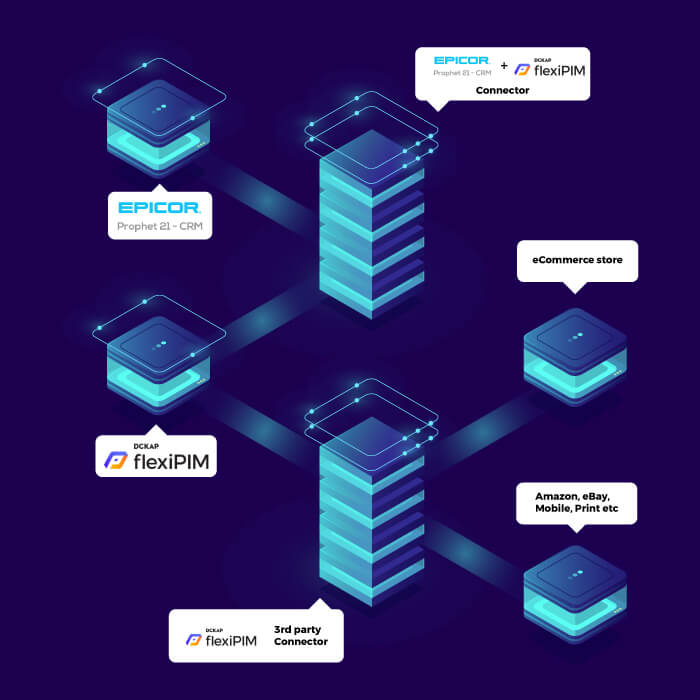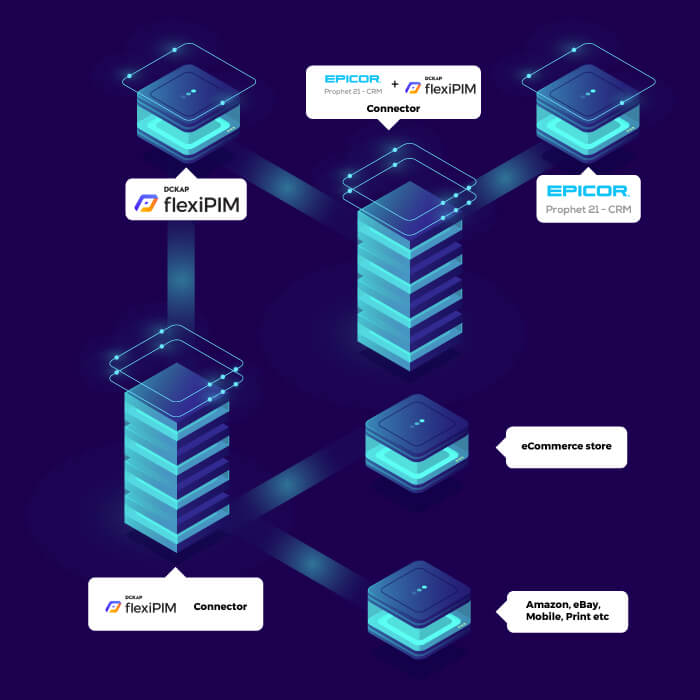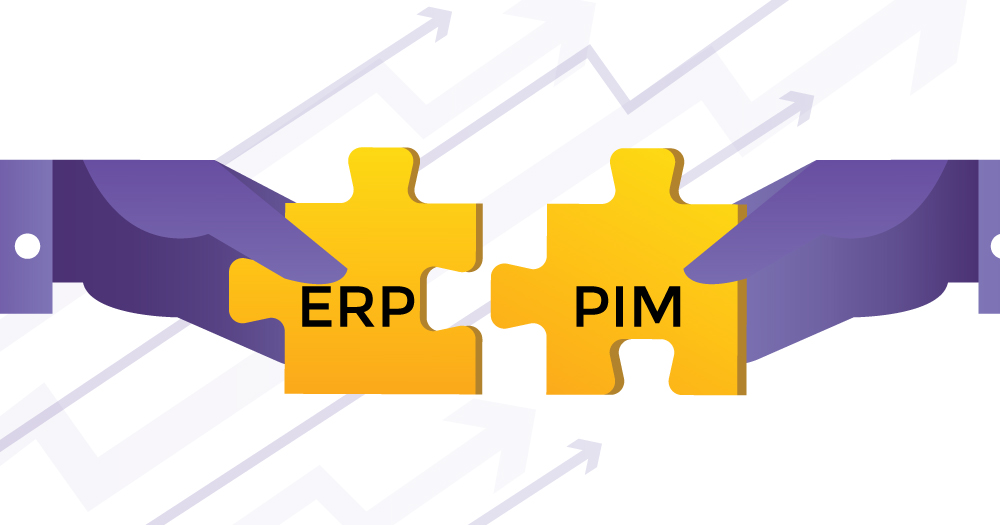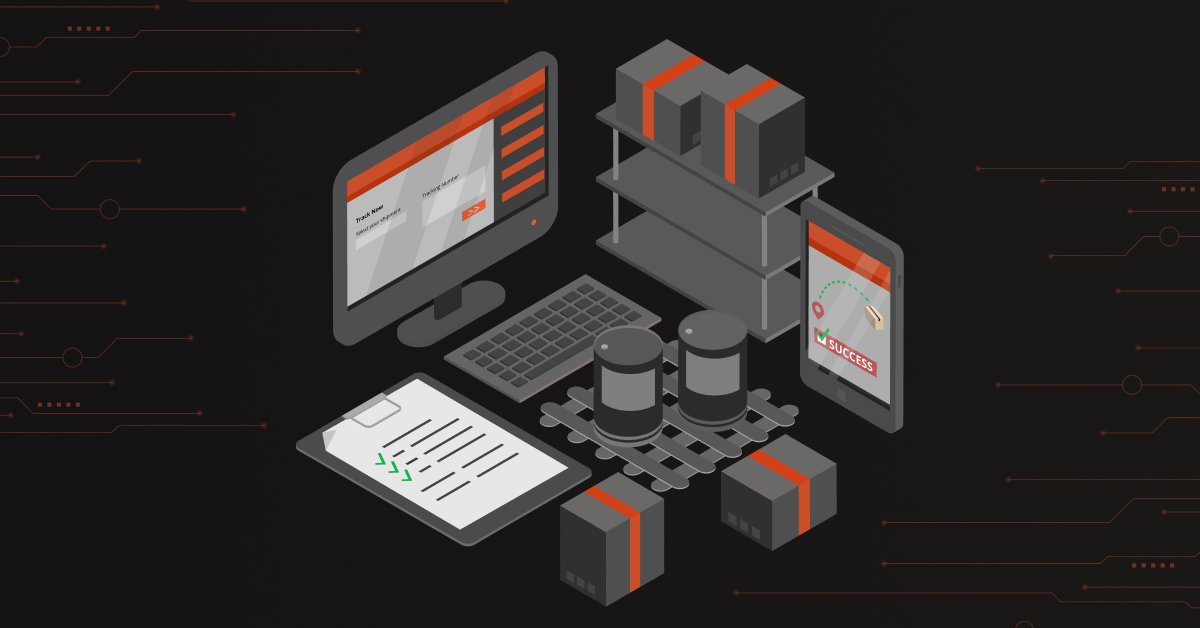Maintaining data using an eCommerce store back-end can be time-consuming if you have a huge set of products. You can store the company’s back-office information in an ERP and push data from there to your eCommerce store. Simple, ain’t it? But is this the best option you got? In this blog, let’s see if that’s a yes or no for you and the proven ways a PIM ERP Integration can help scale your online business.
An ERP is a central repository for data related to products, customers, vendors, logistics, and so on. It can be inventory data, vendor information, customer details, orders, pricing, stocks to name a few.
But what the ERP isn’t designed to store is the marketing information like product descriptions, images, videos, files, and so on.
This is where a PIM comes in. A PIM (Product Information Management) tool is built to manage marketing information for your products like descriptions, catalogs, and digital assets. You can sync the product SKUs from your ERP to the PIM and enrich them with marketing data within the PIM.
The ERP cannot do what the PIM does and vice-versa is true. But together they can fulfill your business needs.
If you want to manage and sync data from the ERP to the eCommerce store directly, it’s surely doable without a PIM. But, if you have products in thousands or millions where volumes of information need to be added or edited every day, a PIM ERP integration would deem fit.
ERPs handle information related to your back office operations and manage dynamic information like stocks, pricing, logistics, and so on. A PIM solution on the other hand handles marketing-related information for your products.
PIM tools do not store any information related to pricing, warehouse info, stocks, or the likes, simply to say, quantities that change by the hours/days. It can store them as a static value for your reference.
A PIM solution helps you build rich product descriptions, organized catalogs, and enrich products with digital assets like product images, videos, tables, and variant data. It is a dependable source of data for your multichannel and multilanguage eCommerce operations.
Contents
A PIM ERP integration makes the transition of data to the eCommerce store smooth.
There can be two scenarios, depending on the type of business needs.
- Creating product data using ERP
- Creating product data using PIM
Creating product data using ERP
Your business needs may require you to create data in your ERP and sync it with your eCommerce store. Here, you would import the required product data from the ERP to your PIM, edit/enrich it with the marketing information and send it back to the ERP where the necessary technical information is added. Import it back to the PIM from where you will channelize it to your sales points.
 For this, you will need
For this, you will need
- An easy import process in your PIM that allows you to fetch the product data you need
- An easy way to keep imported data for reference while editing in PIM-to avoid errors or mixing up of data
- An activity log that keeps track of actions taken on the product data within PIM
- An error log that notifies you in case of an error
- An easy export process to send the product information to the ERP after adding necessary information in PIM
- A PIM ERP integration to allow easy data flow between them
Creating product data using PIM
If your business needs require you to create data in your PIM and sync it with your eCommerce store, you need to be able to generate product SKUs in PIM, add and enrich them with the required information and send it to the ERP to add the technical information. After this import the ERP data back to your PIM from where you can syndicate it to multiple channels.
 For this, you will need
For this, you will need
- An easy way to create products in PIM
- A friendly user interface to define product hierarchies, add product descriptions, digital assets.
- Easy searchability options to find products you need anytime
- An easy import option to fetch required information from the ERP
- An activity log that keeps track of actions taken on the product data within PIM
- An error log that notifies you in case of an error
- An easy export option to send the enriched information back to the ERP, to be synced with the eCommerce system
- A PIM ERP integration to allow easy data flow between them
What is a PIM ERP integration?
An ERP independently handles transactional data whereas a PIM takes care of the marketing information. When used independently these two amazing tools may not give your business the results you expect. A PIM ERP integration is the coming together of both these independent functions to smoothen the data transactions between your ERP, PIM, and eCommerce stores.
Let’s understand this using a scenario.
You have a new product-line idea. You want to launch it within say 6 months. You ideate it, create a design, a prototype, assemble it and finally get it ready for the launch. You created an SKU in the ERP for this product and time is running out. You want to create SKUs for all the variants of this product, source information about it such as appearance, color, dimensions, weight, pricing, and so on.
You need to assemble all this information from multiple departments into one single system, say your ERP. You get it done. Now you want to push this product to the market. Your ERP has information like SKUs, pricing, stocks, quantity, logistics information, and much more.
Your ERP has all the information, But:
How do you make that information appealing and meaningful to a person who is a potential customer on the other side of your eCommerce store?
You will have to create new categories and fields within your ERP for all these variants. Develop a system that will sync with the structure of your eCommerce store. This will,
- Require an investment of time, money, and resources
- Slow down your time to market
When your time to market is slowed down, you lose out on sales. The demand for that product may have gone down by the time you launch it. The time you spend on developing your ERP internally will be directly proportional to the loss of ROI.
Let’s see what happens when you have a PIM solution integrated with your ERP.
You ideate a new product line. All the processes up to creating SKUs remain the same as in the first case. You now have a PIM which is built to collect SKU information from your ERP, enrich it with SEO-friendly product descriptions, variant information, pictures, videos, and all that engage your customers. The SEO-friendly content adds new customers to your basket by showing your product up on their internet search. This will,
- Reduce your investment in time, money, and resources
- Give you a faster time to market
- Gives you the flexibility to personalize your eCommerce store
In the last year, businesses have lost $756 billion because of poor eCommerce personalization. (Source: OptinMonster)
A faster time to market means increased opportunity for sales when the demand is still on the splurge. Time saved is equivalent to the gain in ROI.
Most PIM solutions are priced fairly and will definitely cost you less than the long wasted hours of complex and manual processes.
Benefits of PIM ERP Integration
Apart from these crucial factors, a PIM ERP integration will prove beneficial to you in many other ways which we will be discussing further.
1. Static Information management
A PIM manages product data like categories, properties, SEO metadata, product description, assignment of digital assets like images, videos, files, and so on, multi-language options, multichannel distribution all related to marketing.
These features of PIM when paired with the more technical features of ERP, which we are talking about in the next point, gives a robust structure to your product launch lifecycle.
2. Dynamic information management
An ERP manages more technical information like pricing, stocks, orders, inventory, accounting, supply chain management, Customer data which is crucial for your organizational process. These quantities are dynamically changing on a regular basis which is what an ERP is designed to manage.
These functions when combined with a PIM solution make your organizational processes more efficient and convey complex information in a simple way.
3. Seamless data synchronization
Product data comes from multiple departments of your company. Teams have their own way of maintaining and communicating data. Standardizing this process for all the teams is grueling. Having a PIM ERP integration will enable you to standardize the process of maintaining and managing data in one systematic manner. Plus, these data get synchronized automatically and regularly with a PIM.
4. SKU management
SKUs are the lifeline for an ERP or a PIM. SKUs are the major identifiers for a product that makes the whole PIM process possible. An ERP has an SKU for each product based on which all other information like orders, pricing, inventory, etc are maintained in it.
Similarly in PIM, an SKU is a unique identifier for any product by which editing, enriching, or searchability is made possible.
With a PIM ERP integration, SKU information can be created and sent over to the other platform. SKUs can be managed from both ERP and PIM and all other channels get automatically updated in relation to these changes giving you a better sales experience.
5. Variant data management
A product variant may differ in just one feature from the parent product, say, color or size for example. The ERP will store this as a separate SKU. No matter which variant you choose to edit, you can do it easily when a PIM is integrated with your ERP.
For example, if pants are available in 3 different colors and 7 different sizes, a total of 21 SKUs are managed efficiently within a PIM ERP integration.
6. Reduced stress on your people
Developing PIM processes within an ERP means creating new categories and fields for marketing information. This is a complicated and time-consuming process. Manually maintaining data with traditional methods is even more arduous.
Though PIM and ERP have overlapping functions, using them together makes maintaining and managing data easy for your staff. This enables them to put their time to better use and you to see better conversions faster.
7. Simplified Order & Inventory Management and Data syndication
An ERP keeps you updated about orders, purchases, inventory, bills, and so on while a PIM automates the process of regular syncs between your PIM and ERP information. A PIM also makes categorization and catalog management easy.
Also, an ERP gives you a clear picture of products that are selling and of those that aren’t. It saves you from stocking products that are not seeing sales. With this, you will manage your inventory better.
As for the products that are stocked and aren’t selling, PIM has the option of managing categories and fields of your eCommerce store. With this, you can add those products on the front page of your eCommerce store or add those products as cross-selling or upselling SKUs.
A PIM ERP integration thus makes data syndication, inventory, and order management easier.
8. eCommerce customization
A PIM solution offers the option you showcase related products when a customer is viewing another product. These can be items similar to (cross-sell) or better than (up-sell) the one they’re looking for. Product merchandising is at your finger-tips while you use a PIM-ERP integration.
Merchandising means promoting products on your eCommerce front-end to draw customers’ attention just as displaying products in a window in a physical store.

Merchandising on an eCommerce website

Cross-Selling on Ecommerce Site
9. Control over product lifecycle management
Right from product inception to sales and payments, ERP combined with a PIM gives you control over the business processes. An ERP manages your back-office processes while a PIM takes care of their marketing aspects. Your teams will have one source of truth for all products thus giving you a competitive advantage over others who do not have a PIM-ERP integration.
10. Faster time to market
Time to market is the time period between a product’s initiation and its market launch date. Time to market is usually hindered by factors such as,
- Inefficient PIM processes
- Non-standardized internal processes
- Miscommunication between departments
- Unsystematic data storage
- Lack of proper customer-facing product information
We’ve discussed earlier in this blog how time to market is directly related to the Return on Investment for any product.
11. A centralized hub for information
Whether you create product data in your ERP or PIM, it gets stored and synchronized with all sales channels to enable an omnichannel experience. Product data is not only accessible to all technical teams, product teams, retailers, suppliers, management, sales, finance, marketing, and so on but also available in a format that suits their nature of work.
A sales guy would require up-to-date features and pricing whereas a retailer would require logistic information like weight size UPC and so on. With a PIM and ERP integration, you have one source of truth for all that makes the PIM process not a nightmare but a pleasant dream!
If you enjoyed reading this blog, go ahead, subscribe to our blog and we’ll keep you updated about eCommerce and PIM trends and updates. We promise we’ll mind your privacy.





